- Home
- J. K. Rowling
Quidditch Through the Ages Page 3
Quidditch Through the Ages Read online
Page 3
5. In the case of injury, no substitution of players will take place. The team will play on without the injured player.
6. Wands may be taken on to the pitch2 but must under no circumstances whatsoever be used against opposing team members, any opposing team member’s broom, the referee, any of the balls or any member of the crowd.
7. A game of Quidditch ends only when the Golden Snitch has been caught, or by mutual consent of the two team Captains.
Fouls
Rules are of course ‘made to be broken’. Seven hundred Quidditch fouls are listed in the Department of Magical Games and Sports records, and all of them are known to have occurred during the final of the first ever World Cup in 1473. The full list of these fouls, however, has never been made available to the wizarding public. It is the Department’s view that witches and wizards who see the list ‘might get ideas’.
I was fortunate enough to gain access to the documents relating to these fouls while researching this book and can confirm that no public good can come of their publication. Ninety per cent of the fouls listed are, in any case, impossible as long as the ban on using wands against the opposing team is upheld (this ban was imposed in 1538). Of the remaining ten per cent, it is safe to say that most would not occur to even the dirtiest player; for example, ‘setting fire to an opponent’s broom tail’, ‘attacking an opponent’s broom with a club’, ‘attacking an opponent with an axe’. This is not to say that modern Quidditch players never break rules. Ten common fouls are listed below. The correct Quidditch term for each foul is given in the first column.
Name
Applies to
Description
Blagging
All players
Seizing opponent’s broom tail to slow or hinder
Blatching
All players
Flying with intent to collide
Blurting
All players
Locking broom handles with a view to steering opponent off course
Bumphing
Beaters only
Hitting Bludger towards crowd, necessitating a halt of the game as officials rush to protect bystanders. Sometimes used by unscrupulous players to prevent an opposing Chaser scoring
Cobbing
All players
Excessive use of elbows towards opponents
Flacking
Keeper only
Sticking any portion of anatomy through goal hoop to punch Quaffle out. The Keeper is supposed to block the goal hoop from the front rather than the rear
Haversacking
Chasers only
Hand still on Quaffle as it goes through goal hoop (Quaffle must be thrown)
Quaffle pocking
Chasers only
Tampering with Quaffle, e.g., puncturing it so that it falls more quickly or zig-zags
Snitchnip
All players but Seeker
Any player other than Seeker touching or catching the Golden Snitch
Stooging
Chasers only
More than one Chaser entering the scoring area
Referees
Refereeing a Quidditch match was once a task for only the bravest witches and wizards. Zacharias Mumps tells us that a Norfolk referee called Cyprian Youdle died during a friendly match between local wizards in 1357. The originator of the curse was never caught hut is believed to have been a member of the crowd. While there have been no proven referee slayings since, there have been several incidences of broom-tampering over the centuries, the most dangerous being the transformation of the referee’s broom into a Portkey, so that he or she is whisked away from the match halfway through and turns up months later in the Sahara Desert. The Department of Magical Games and Sports has issued strict guidelines on the security measures relating to players’ brooms and these incidents are now, thankfully, extremely rare.
The effective Quidditch referee needs to be more than an expert flier. He or she has to watch the antics of fourteen players at once and the most common referee’s injury is consequently neck strain. At professional matches the referee is assisted by officials who stand around the boundaries of the pitch and ensure that neither players nor balls stray over the outer perimeter.
In Britain, Quidditch referees are selected by the Department of Magical Games and Sports. They have to take rigorous flying tests and an exacting written examination on the rules of Quidditch and prove, through a series of intensive trials, that they will not jinx or curse offensive players even under severe pressure.
Chapter Seven
Quidditch Teams of Britain and Ireland
The necessity for keeping the game of Quidditch secret from Muggles means that the Department of Magical Games and Sports has had to limit the number of games played each year. While amateur games are permitted as long as the appropriate guidelines are followed, professional Quidditch teams have been limited in number since 1674 when the League was established. At that time, the thirteen best Quidditch teams in Britain and Ireland were selected to join the League and all others were asked to disband. The thirteen teams continue to compete each year for the League Cup.
Appleby Arrows
This northern English team was founded in 1612. Its robes are pale blue, emblazoned with a silver arrow. Arrows fans will agree that their team’s most glorious hour was their 1932 defeat of the team who were then the European champions, the Vratsa Vultures, in a match that lasted sixteen days in conditions of dense fog and rain. The club supporters’ old practice of shooting arrows into the air from their wands every time their Chasers scored was banned by the Department of Magical Games and Sports in 1894, when one of these weapons pierced the referee Nugent Potts through the nose. There is traditionally fierce rivalry between the Arrows and the Wimbourne Wasps (see below).
Ballycastle Bats
Northern Ireland’s most celebrated Quidditch team has won the Quidditch League a total of twenty-seven times to date, making it the second most successful in the League’s history. The Bats wear black robes with a scarlet bat across the chest. Their famous mascot Barny the Fruitbat is also well known as the bat featured in Butterbeer advertisements (Barny says: I’m just batty about Butterbeer!).
Caerphilly Catapults
The Welsh Catapults, formed in 1402, wear vertically striped robes of light green and scarlet. Their distinguished club history includes eighteen League wins and a famous triumph in the European Cup final of 1956, when they defeated the Norwegian Karasjok Kites. The tragic demise of their most famous player, ‘Dangerous Dai’ Llewellyn, who was eaten by a Chimaera while on holiday in Mykonos, Greece, resulted in a day of national mourning for all Welsh witches and wizards. The Dangerous Dai Commemorative Medal is now awarded at the end of each season to the League player who has taken the most exciting and foolhardy risks during a game.
Chudley Cannons
The Chudley Cannons’ glory days may be considered by many to be over, but their devoted fans live in hope of a renaissance. The Cannons have won the League twenty-one times, but the last time they did so was in 1892 and their performance over the last century has been lacklustre. The Chudley Cannons wear robes of bright orange emblazoned with a speeding cannon ball and a double ‘C’ in black. The club motto was changed in 1972 from ‘We shall conquer’ to ‘Let’s all just keep our fingers crossed and hope for the best’.
Falmouth Falcons
The Falcons wear dark-grey and white robes with a falcon-head emblem across the chest. The Falcons are known for hard play, a reputation consolidated by their world-famous Beaters, Kevin and Karl Broadmoor, who played for the club from 1958 to 1969 and whose antics resulted in no fewer than fourteen suspensions from the Department of Magical Games and Sports. Club motto: ‘Let us win, but if we cannot win, let us break a few heads.’
Holyhead Harpies
The Holyhead Harpies is a very old Welsh club (founded 1203) unique among Quidditch teams around the world because it has only ever hired witches. Harpy robes are dark green with a gold
en talon upon the chest. The Harpies’ defeat of the Heidelberg Harriers in 1953 is widely agreed to have been one of the finest Quidditch games ever seen. Fought over a seven-day period, the game was brought to an end by a spectacular Snitch capture by the Harpy Seeker Glynnis Griffiths. The Harriers’ Captain Rudolf Brand famously dismounted from his broom at the end of the match and proposed marriage to his opposite number, Gwendolyn Morgan, who concussed him with her Cleansweep Five.
Kenmare Kestrels
This Irish side was founded in 1291 and is popular worldwide for the spirited displays of their leprechaun mascots and the accomplished harp playing of their supporters. The Kestrels wear emerald-green robes with two yellow 'K’s back to back on the chest. Darren O’Hare, Kestrel Keeper 1947-60, captained the Irish National Team three times and is credited with the invention of the Chaser Hawkshead Attacking Formation (see Chapter Ten).
Montrose Magpies
The Magpies are the most successful team in the history of the British and Irish League, which they have won thirty-two times. Twice European Champions, the Magpies have fans across the globe. Their many outstanding players include the Seeker Eunice Murray (died 1942), who once petitioned for a ‘faster Snitch because this is just too easy’, and Hamish MacFarlan (Captain 1957-68), who followed his successful Quidditch career with an equally illustrious period as Head of the Department of Magical Games and Sports, The Magpies wear black and white robes with one magpie on the chest and another on the back.
Pride of Portree
This team comes from the Isle of Skye, where it was founded in 1292. The ‘Prides’, as they are known to their fans, wear deep-purple robes with a gold star on the chest. Their most famous Chaser, Catriona McCormack, captained the team to two League wins in the 1960s and played for Scotland thirty-six times. Her daughter Meaghan currently plays Keeper for the team. (Her son Kirley is lead guitarist with the popular wizarding band The Weird Sisters.)
Puddlemere United
Founded in 1163, Puddlemere United is the oldest team in the League. Puddlemere has twenty-two League wins and two European Cup triumphs to its credit. Its team anthem ‘Beat Back Those Bludgers, Boys, and Chuck That Quaffle Here’ was recently recorded by the singing sorceress Celestina Warbeck to raise funds for St Mungo’s Hospital for Magical Maladies and Injuries. Puddlemere players wear navy-blue robes bearing the club emblem of two crossed golden bulrushes.
Tutshill Tornados
The Tornados wear sky-blue robes with a double ‘T’ in dark blue on the chest and back. Founded in 1520, the Tornados enjoyed their greatest period of success in the early twentieth century when, captained by Seeker Roderick Plumpton, they won the League Cup five times in a row, a British and Irish record. Roderick Plumpton played Seeker for England twenty-two times and holds the British record for fastest capture of a Snitch during a game (three and a half seconds, against Caerphilly Catapults, 1921).
Wigtown Wanderers
This Borders club was founded in 1422 by the seven offspring of a wizarding butcher named Walter Parkin. The four brothers and three sisters were by all accounts a formidable team who rarely lost a match, partly, it is said, because of the intimidation felt by opposing teams at the sight of Walter standing on the sidelines with a wand in one hand and a meat cleaver in the other. A Parkin descendant has often been found on the Wigtown team over the centuries and in tribute to their origins, the players wear blood-red robes with a silver meat cleaver upon the chest.
Wimbourne Wasps
The Wimbourne Wasps wear horizontally striped robes of yellow and black with a wasp upon their chests. Founded in 1312, the Wasps have been eighteen times League winners and twice semi-finalists in the European Cup. They are alleged to have taken their name from a nasty incident which occurred during a match against the Appleby Arrows in the mid-seventeenth century, when a Beater flying past a tree on the edge of the pitch noticed a wasps’ nest among the branches and batted it towards the Arrows’ Seeker, who was so badly stung that he had to retire from the game. Wimbourne won and thereafter adopted the wasp as their lucky emblem. Wasp fans (also known as ‘Stingers’) traditionally buzz loudly to distract opposing Chasers when they are taking penalties.

 Harry Potter and the Philosophers Stone
Harry Potter and the Philosophers Stone Harry Potter and the Chamber of Secrets
Harry Potter and the Chamber of Secrets Harry Potter and the Goblet of Fire
Harry Potter and the Goblet of Fire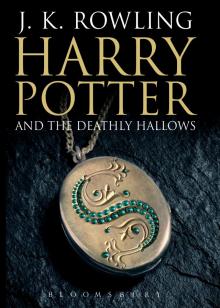 Harry Potter and the Deathly Hallows
Harry Potter and the Deathly Hallows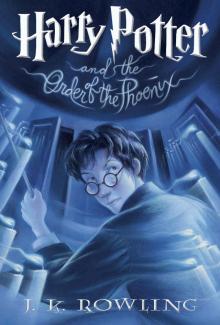 Harry Potter and the Order of the Phoenix
Harry Potter and the Order of the Phoenix Harry Potter and the Half-Blood Prince
Harry Potter and the Half-Blood Prince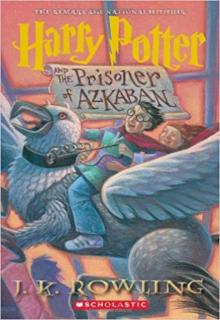 Harry Potter and the Prisoner of Azkaban
Harry Potter and the Prisoner of Azkaban Fantastic Beasts and Where to Find Them
Fantastic Beasts and Where to Find Them Short Stories from Hogwarts of Heroism, Hardship and Dangerous Hobbies
Short Stories from Hogwarts of Heroism, Hardship and Dangerous Hobbies Hogwarts: An Incomplete and Unreliable Guide
Hogwarts: An Incomplete and Unreliable Guide The Tales of Beedle the Bard
The Tales of Beedle the Bard The Casual Vacancy
The Casual Vacancy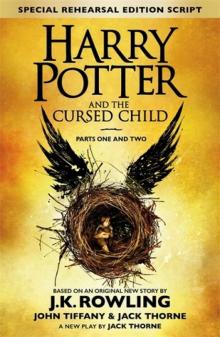 Harry Potter and the Cursed Child
Harry Potter and the Cursed Child Short Stories from Hogwarts of Power, Politics and Pesky Poltergeists
Short Stories from Hogwarts of Power, Politics and Pesky Poltergeists Quidditch Through the Ages
Quidditch Through the Ages The Ickabog
The Ickabog![Fantastic Beasts, The Crimes of Grindelwald [UK] Read online](http://i1.bookreadfree.com/i/03/19/fantastic_beasts_the_crimes_of_grindelwald_uk_preview.jpg) Fantastic Beasts, The Crimes of Grindelwald [UK]
Fantastic Beasts, The Crimes of Grindelwald [UK] Harry Potter and the Cursed Child: Parts One and Two
Harry Potter and the Cursed Child: Parts One and Two The Prisoner of Azkaban
The Prisoner of Azkaban Fantastic Beasts: The Crimes of Grindelwald
Fantastic Beasts: The Crimes of Grindelwald The Hogwarts Library Collection
The Hogwarts Library Collection Short Stories from Hogwarts of Heroism, Hardship and Dangerous Hobbies (Kindle Single) (Pottermore Presents)
Short Stories from Hogwarts of Heroism, Hardship and Dangerous Hobbies (Kindle Single) (Pottermore Presents) Harry Potter and the Deathly Hallows hp-7
Harry Potter and the Deathly Hallows hp-7 Hogwarts: An Incomplete and Unreliable Guide (Kindle Single) (Pottermore Presents)
Hogwarts: An Incomplete and Unreliable Guide (Kindle Single) (Pottermore Presents) Harry Potter and the Goblet of Fire hp-4
Harry Potter and the Goblet of Fire hp-4 The Christmas Pig
The Christmas Pig Harry Potter and the Sorcerer's Stone
Harry Potter and the Sorcerer's Stone The Order of the Phoenix
The Order of the Phoenix Harry Potter and the Prisoner of Azkaban hp-3
Harry Potter and the Prisoner of Azkaban hp-3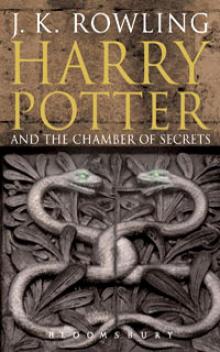 Harry Potter and the Chamber of Secrets hp-2
Harry Potter and the Chamber of Secrets hp-2 HP 3 - Harry Potter and the Prisoner of Azkaban
HP 3 - Harry Potter and the Prisoner of Azkaban The Half-Blood Prince
The Half-Blood Prince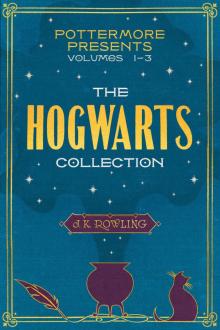 The Hogwarts Collection
The Hogwarts Collection Tales of Beedle the Bard
Tales of Beedle the Bard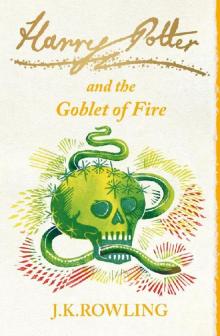 The Goblet of Fire
The Goblet of Fire Harry Potter and the Half-Blood Prince hp-6
Harry Potter and the Half-Blood Prince hp-6 Short Stories from Hogwarts of Power, Politics and Pesky Poltergeists (Kindle Single) (Pottermore Presents)
Short Stories from Hogwarts of Power, Politics and Pesky Poltergeists (Kindle Single) (Pottermore Presents) Harry Potter and the Sorcerer's Stone hp-1
Harry Potter and the Sorcerer's Stone hp-1